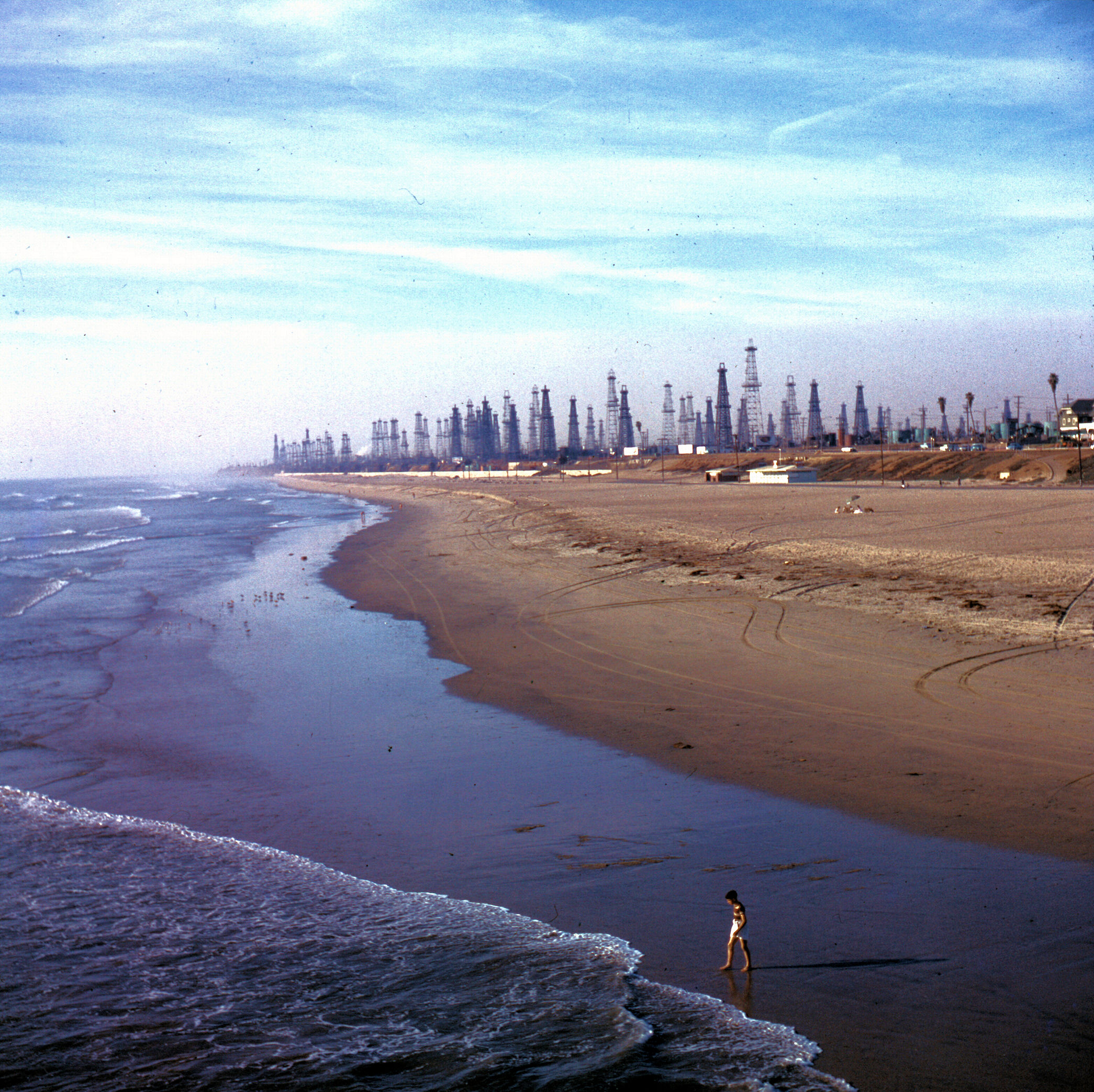A forest of oil derricks dot the shore looking up the coast from the Huntington Beach pier, 1956 (Courtesy the Orange County Archives).
The Oil Industry in Orange County
Beginning in the 1890s, the oil industry gave a big boost to Orange County’s economy. People had been drilling wells in the Brea Canyon area since the 1860s, and by the 1880s a few had even struck oil. But the big boom really began in 1897, when the first well came in at Olinda, in Carbon Canyon. A little town developed, and the Santa Fe railroad even built a little spur line up to the wells in 1899. From there oil exploration spread out across the hills of northern Orange County. By 1910, Brea was the center of the local oil industry.
(Amazingly, Olinda #1 is still pumping, after more than 120 years. It’s on the grounds of the Olinda Oil Museum – 4025 Santa Fe Road, Brea – along with a number of historic structures.)
The next important strike was in 1919, when Union Oil brought in a gusher in the middle of C.C. Chapman’s lemon grove at Placentia. That opened up a whole new area along the north side of the Santa Ana Canyon to oil exploration, with lots of investors looking to get rich quick.
Things got even more hectic a year later when Standard Oil #1 came in at Huntington Beach, shifting the oil boom to the coast. Bolsa Chica #1 soon followed, and Huntington Beach – which had been a pretty quiet little beach town until then – took off like a gusher. By mid-1921 there were about 700 producing wells in Orange County.
Now the boom was really on. In the 1920s, people went looking for oil everywhere. Thousands of acres of farmland, and even city lots were optioned for oil exploration and investors were busily buying and selling mineral rights. Wildcat wells were drilled in Orange, Fountain Valley, El Toro, even up in the Santa Ana Mountains. Most of them turned out to be “dusters,” but eventually about a dozen oilfields were identified in the county.
The main product was gasoline back then. Natural gas was almost considered a waste product, and either burned off or sold cheaply for local domestic use. By 1924, the oil industry was generating $50,000,000 a year, while citrus was producing just under $18,000,000.
Of course, most of the citrus money stayed here with the local growers, while a lot of the oil money went to the big oil companies and various investors outside the county. The biggest contribution oil made to the local economy were lease payments to various property owners and property taxes paid to the county. For many years, Orange County was one of the largest oil-producing counties in the state.
Most of the oil wells are gone now. A few are still pumping in the northern hills and along the coast. Some of the coastal wells angle out to sea to tap oil fields beneath the ocean floor. But Orange County’s days as a petroleum powerhouse seem to be behind us.
